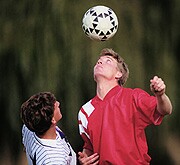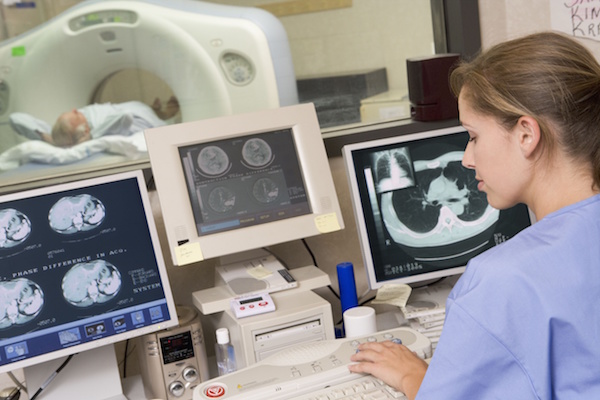
MONDAY, Aug. 30 (HealthDay News) — High school-age athletes are more likely than younger kids to have sports-related concussions, but the rate of such injuries in both groups is on the rise, a new U.S. study suggests.
From 1997 to 2007, emergency department visits for concussion in kids aged 8 to 13 playing organized sports doubled, and the number of visits increased by more than 200 percent in older teens, according to the report.
In related news, the American Academy of Pediatrics has issued new guidelines on what to do about sports-related concussions, with advice for both parents and physicians.
The study and guidelines are published online and in the September print issue of Pediatrics.
Awareness of concussions is increasing, according to Dr. Mark Halstead, who co-wrote the new recommendations. Unlike the thinking of a generation ago, concussions aren’t something to “shake off,” said Halstead, an assistant professor of pediatrics and orthopaedics at Washington University School of Medicine in St. Louis.
“A concussion is an injury to the brain that is typically not a structural injury but a functional injury,” he explained. He tells parents to think of it as a computer bug. “If a computer gets a virus, the computer doesn’t function appropriately.”
Parents should know that “no athlete should go back to play on the same day they have their concussion. We recommend athletes who have a concussion be evaluated by a medical professional before they return to play,” Halstead said.
There is no medication or treatment proven for concussion, other than rest, he added. That means resting the body and the brain, he noted.
Even homework, television and video games may worsen symptoms after a concussion, according to the AAP guidelines, which say that the young athlete may require a temporary leave of absence from school. The child should also be restricted from physical activity until there are no symptoms at rest or during exercise, the guidelines note.
Symptoms of a concussion generally resolve within about seven to 10 days, according to the AAP, but parents should seek additional medical help if symptoms worsen.
“Worrisome signs for us are a progressively increasing headache, if a child is unable to move an arm or leg, worsening symptoms, repeated throwing up,” said Halstead. “Those are things that should be evaluated sooner.” Other symptoms include feeling lightheaded or confused or losing consciousness.
The guidelines also suggest that retirement from contact sports should be considered for an athlete who has had multiple concussions or who has suffered post-concussion symptoms for more than three months.
Which sports are riskiest for concussions? For organized team sports, concussions were most likely in football, as well as basketball, soccer and ice hockey; for individual and leisure sports, concussions were more likely during bicycling, playground games and snow skiing, the researchers found. To reduce injuries, the AAP recommends taking preventive steps, such as using protective equipment and padding goalposts.
From 2001 to 2005, there were an estimated 502,000 emergency department visits for concussion among U.S. kids aged 8 to 19 — about half of which were sports-related — and 8- to 13-year-olds accounted for about one-third of the visits, according to Dr. Lisa Bakhos and colleagues at Brown University, Injury Prevention Center and Rhode Island Hospital/Hasbro Children’s Hospital in Providence, who analyzed information from two national databases for the study.
Although organized team sport participation declined from 1997 to 2007, emergency department visits for concussions increased among both young children and teens, the study found.
The study and the guidelines will boost awareness of the seriousness of concussions, said Dr. Gillian Hotz, director of the concussion program in the department of neurosurgery at the University of Miami Miller School of Medicine.
“Most kids are OK [after a concussion],” Hotz said. But more information has evolved, and health care experts know to take concussions more seriously and to be sure kids are symptom-free before returning to play, she added.
Hotz suspects the number of concussions found in the study are underestimates, pointing out that many children are not seen in the emergency department but may visit their pediatrician instead, and others may not get medical attention at all.
More information
To learn more about what to do about suspected concussions, visit the American Academy of Pediatrics.

